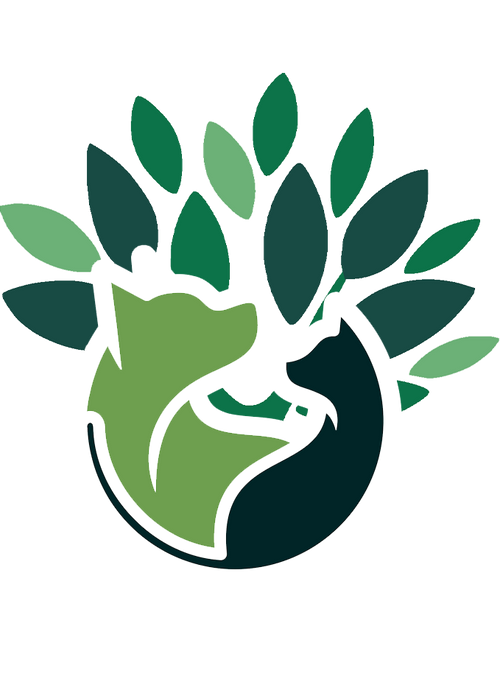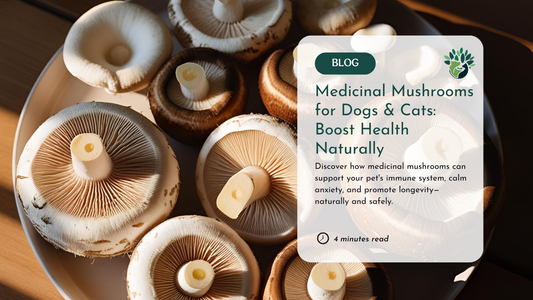Did you know that your pet’s health could be influenced by principles that are over 3,000 years old? 🌿 Traditional Chinese Veterinary Medicine (TCVM) offers a unique, time-tested approach to pet care, focusing on balance, harmony, and the connection between the body’s energy and overall well-being.
If terms like “yin and yang,” “meridians,” and “qi” feel unfamiliar, don’t worry—you’re not alone. In this blog, we’ll explore TCVM’s fascinating history, its foundational concepts, and how it can transform your approach to caring for your furry friends. Prefer to watch instead? Check out my in-depth video below, where I explain everything step by step.
Table of Contents
-
The Ancient Roots of TCVM
-
The Philosophy of Balance: The Dao and Yin-Yang
-
Understanding Qi and Meridians
-
The Five Elements and Your Pet’s Health
-
Signs of Imbalance and How to Restore Harmony
-
Food Therapy, Herbs, and Acupressure in TCVM
-
FAQs: Common Questions About TCVM
The Ancient Roots of TCVM
TCVM is a branch of Traditional Chinese Medicine (TCM), which has been practiced for over 5,000 years. While initially developed for humans, TCVM for animals emerged from farm animal care and adapted human practices. Ancient texts like Boley’s Canon document these practices, originally applied to horses and cattle.
Today, TCVM combines this ancient wisdom with modern veterinary care, providing holistic solutions for pets.
The Philosophy of Balance: The Dao and Yin-Yang
At the heart of TCVM is the Dao, a philosophy of balance and harmony. The familiar yin-yang symbol represents this idea: opposites like night and day, or rest and activity, are interconnected and necessary for balance.
For your pet, this philosophy means achieving harmony between their environment, diet, and internal energy. When balance is disrupted, illness and behavioral issues often arise.
Understanding Qi and Meridians
Qi (pronounced "chee") is the vital energy that flows through the body, powering organs and maintaining health. Qi travels along pathways called meridians, which connect internal organs to external points on the body.
Blockages or imbalances in qi flow can lead to health issues. For example, stress might disrupt liver qi, causing digestive problems or anxiety in your pet.
The Five Elements and Your Pet’s Health
The Five Elements—Wood, Fire, Earth, Metal, and Water—are central to TCVM. Each element corresponds to specific organs, traits, and health tendencies:
-
🌳 Wood: Energetic and adventurous pets. Common issues: stress and joint health.
-
🔥 Fire: Playful and spirited pets. Common issues: anxiety and overheating.
-
🌍 Earth: Loyal and nurturing pets. Common issues: digestion and weight.
-
🛡️ Metal: Disciplined and focused pets. Common issues: respiratory and skin.
-
🌊 Water: Thoughtful and calm pets. Common issues: kidney and aging.
Understanding your pet’s element helps predict potential health challenges and informs tailored care strategies.
Signs of Imbalance and How to Restore Harmony
Imbalances in your pet’s element or qi can lead to symptoms like anxiety, digestive upset, or chronic illnesses. For example:
-
A Fire pet may exhibit separation anxiety or overheating.
-
A Wood pet may show signs of stress-related behavior.
Restoring Balance: TCVM focuses on addressing the root cause through a combination of food therapy, herbs, acupuncture, and lifestyle changes.
Food Therapy, Herbs, and Acupressure in TCVM
TCVM incorporates specific foods and herbs to balance qi and support organ health. Food energetics is a foundational concept in Traditional Chinese Veterinary Medicine (TCVM), emphasizing the healing power of food and herbs in balancing qi and supporting organ health. This forms the basis of food therapy, where specific foods are chosen to align with an animal's unique energetic needs.
- Cooling Foods: Duck, cucumber, and leafy greens help calm the energy of Fire pets.
- Warming Foods: Lamb and sweet potatoes nourish and energize Water pets.
- Herbal Formulas: Tailored remedies precisely address unique patterns of imbalance, providing targeted support.
Food therapy demonstrates how food is not just sustenance but a powerful tool for healing, balance, and overall well-being. Learn more about food energetics and the art of food therapy on our blog!
Complementing food therapy, acupressure and acupuncture stimulate meridian points to enhance energy flow, promoting both physical and emotional well-being.
Embrace the Balance of TCVM
Traditional Chinese Veterinary Medicine offers a rich, holistic perspective on pet care that’s as timeless as it is transformative. By understanding your pet’s element and the flow of qi, you can address health issues at their root and promote lifelong wellness.
🌟 Want to Dive Deeper Into the Five Elements of TCVM? 🌟
Watch Dr. Ruth Roberts in a live session on “5 Elements of Chinese Medicine for Your Pet’s Health Explained.” Discover how understanding these elements can transform your approach to your pet's health, helping you create harmony, balance, and wellness for your furry companions.
Don’t miss this opportunity to gain actionable insights and ask your questions live!
Curious to learn more about your pet’s element and how to create a diet and lifestyle plan tailored to their unique needs? Schedule a session with a Certified Pet Health Coach and start their journey to balance and harmony.
Learn More: Curious about how TCVM principles can transform your pet's health? Tune in to our featured podcast where Dr. Ruth Roberts talk about TCVM's history, philosophies, and practical applications for pet care. Don’t miss this opportunity to learn more about creating balance and harmony for your furry friends!















